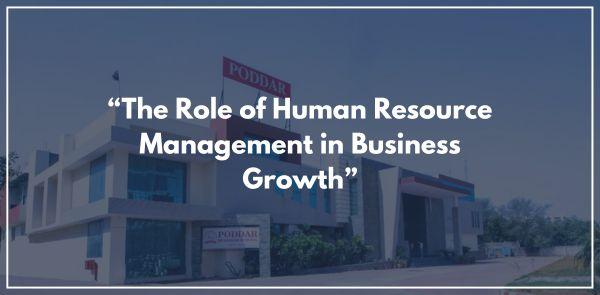
Introduction
Human Resource Management (HRM) plays a crucial role in driving business growth by effectively managing an organization's workforce. In today’s dynamic corporate environment, businesses rely on HRM to build a strong foundation of talent, ensure employee engagement, and align human capital with strategic goals. While traditional HRM practices focus on recruitment, training, and performance management, experiential learning has emerged as a game-changer in developing a skilled and adaptable workforce.
HRM as a Growth Driver
HRM is at the core of business success as it fosters an environment that enhances productivity, innovation, and employee satisfaction. The key functions of HRM contributing to business growth include:
- Talent Acquisition and Retention – Hiring the right talent and creating a conducive work environment to retain employees ensures business stability and growth.
- Employee Training and Development – Regular training programs help employees stay updated with industry trends and enhance their skills.
- Performance Management – HRM ensures employees are motivated and aligned with organizational goals through performance appraisals, rewards, and feedback systems.
- Workplace Culture and Employee Engagement – A positive work culture fosters innovation, teamwork, and high morale, which directly impacts business success.
- Compliance and Ethics – HRM ensures adherence to labor laws, diversity policies, and ethical business practices, minimizing risks and enhancing brand reputation.
Experiential Learning in HRM
Experiential learning, a hands-on approach to education, has revolutionized HRM strategies for workforce development. Unlike traditional learning methods, experiential learning involves real-world experiences that enhance problem-solving, decision-making, and leadership skills. Some key experiential learning techniques used in HRM include:
1. On-the-Job Training (OJT)
OJT allows employees to gain practical experience by working under the guidance of experienced professionals. This method is particularly effective in industries where technical skills and real-time decision-making are crucial.
2. Case Study Analysis
Analyzing real-world business cases helps employees and students understand HRM challenges and devise strategic solutions. This method enhances critical thinking and prepares future HR professionals for corporate challenges.
3. Role-Playing and Simulations
HR departments use role-playing exercises to train employees in conflict resolution, negotiation, and leadership skills. Simulations help employees experience real workplace scenarios, making them better equipped to handle challenges.
4. Internships and Industry Collaborations
Partnering with businesses for internships allows students and employees to gain practical exposure. Such programs bridge the gap between theoretical knowledge and industry requirements, making them job-ready.
5. Corporate Training Programs and Workshops
HRM organizes workshops that involve interactive activities, group discussions, and live projects to enhance employee engagement and skills.
Conclusion
The integration of HRM and experiential learning is vital for business growth. HRM not only ensures that organizations attract and retain top talent but also enhances employee capabilities through hands-on learning experiences. Companies that prioritize experiential learning create a workforce that is agile, innovative, and well-prepared for future challenges. By adopting these modern HRM practices, businesses can achieve sustainable growth while fostering a culture of continuous learning and development.
